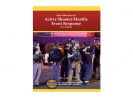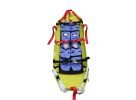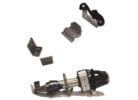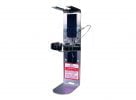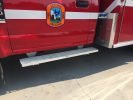7 Tips for Successful Grant Writing
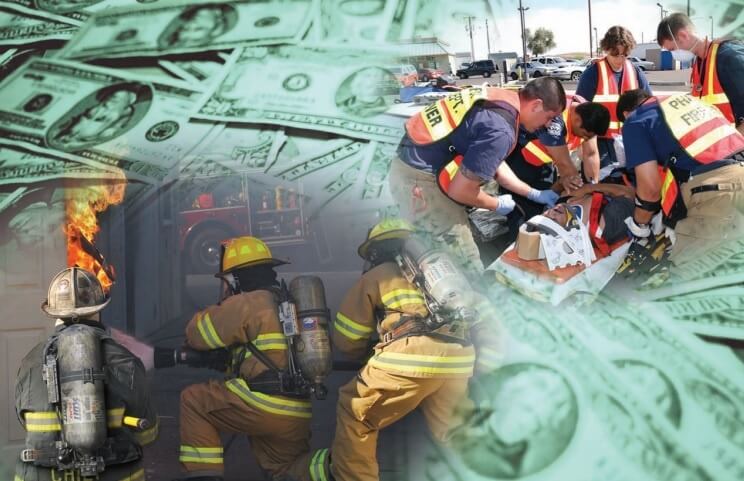
Grants are a great way for your department to acquire additional funding for equipment and services that exceed your department’s operational budget. Grants can help pay for safety equipment, new fire apparatus, EMS equipment or provide funding for additional staff. Securing proper funding allows you to provide a safe work environment for employees and helps ensure public health and safety. Below are 7 tips for writing a successful grant for any first response agency.
1. Focus Your Grant Opportunity Research on a Specific Need
There are hundreds of federal and private grant opportunities out there for agencies of every size. The difficulty is in searching through all the possible opportunities to find something that you are qualified for while also meeting the needs of your department. Historically, agencies that tend to be the most successful start by researching available grant opportunities and then matching an organizational need to that funding. For example, your department may have a hard time finding a grant for a specific equipment like hose or ventilation fans, because your search is too narrow. The Idea is to find a grant that you can mold to fit your circumstances then apply it to your specific department or area of need. A couple of websites that are particularly useful for searching for grants are grants.gov and federalgrantswire.com.
2. Treat Grant Writing Like a Skill to Develop
Grant writing takes time and involves thoughtful planning and preparation. Because of this, many organizations will hire a grant coordinator, grant consultant or grant writer to improve their chances. It is challenging to take it on alone but if you are motivated and have the drive to succeed, you can save your organization a substantial amount of money. If you choose to take this on, it is important to dedicate adequate time to researching the application process and understanding what components make up a successful proposal. A quick search online should reveal plenty of videos and articles on how to write a successful grant. Two of the most helpful we have found are NVFC’s Grant Writing Guide and FEMA’s Funding Alternatives for Emergency Medical and Fire Services. Applicants should also consider taking a grant workshop to strengthen their grant writing and grant management skills. These workshops focus on the basics of the grant writing process and explore effective ways to write and prepare applications. You can find a list of available FEMA workshops at https://www.fema.gov/afgp-workshop-schedule.
3. Don’t Ignore the Smaller Grant Opportunities
Many organizations focus on the large FEMA (Federal Emergency Management Agency) opportunities such as the Assistance to Firefighter Grant (AFG), general program and Fire Prevention and Safety (FP&S) and Staffing for Adequate Fire and Emergency Response (SAFER). These grants have the largest amount of money up for grabs but there are hundreds of smaller grant opportunities your department can benefit from. Along with the smaller federal grants, there are also private grants and grants that focus on specific states or regions.
4. Reach out for Help Internally and Externally
Chances are that there are people within your organization that can help contribute to this process. Look for people with specific skills that you can recruit to help you in the grant writing process. Another commonly missed opportunity is reaching out to the organization that is offering the grant. They will often have the best information on how to write a successful proposal and tips and tricks to help you along the way. If you are wondering what has been successful in the past, look through this list from FEMA containing the names of organizations like yours that have been awarded grants in the past and contact them for details on what made their application successful.
5. Make Your Proposal Clear and Concise
Your goal should be to provide a complete description of what needs to be done as clearly and briefly as possible. Include the project scope and insure that it’s realistic with regard to the funds that are being requested. Reviewers have large number of grants to consider in a short period of time, they can easily lose concentration and miss key points of a proposal if they are hidden within a confusing and lengthy document.
6. Follow the Rules
It’s important to read and understand the specific program guidelines for each grant opportunity. In order to be successful, make sure you read and follow all of the instructions in the request for proposal (RFP). Pay close attention to the funding priorities, specific application procedures, special documents, signature requirements and deadlines. All of the major grants do a great job at providing explicit and detailed instructions. If you read these and follow them closely you should be able to develop a successful proposal. Because these grants are so competitive and graders are in limited supply, many of the major grants are now using computer graded scoring as the initial step in their application. It’s important to present your case and answer these questions in a way that gives your department the highest possible score so that you can move forward to the next step.
7. Make Your Case With High Quality Data
“Writing grants are challenging enough. Don’t let the lack of quality data hold you back from being successful,” – Tom Louis, Business Development Analyst and 22-year fire service veteran. Your department’s RMS (Records Management Software) should be utilized to pull relevant data to support your application. Using quantitative data as evidence to support your narrative can greatly improve your credibility. Rather than using emotional appeals to sway decision makers, fire departments need to be prepared to defend their proposal with hard data that can be used to demonstrate your value to the community, examine and defend your department’s budget and highlight gaps in funding. RMS software such as Emergency Reporting will allow you to pull specific reports to support your case including, 1501 – Equipment Replacement Date for Category for Subcategory for Date Range, 553 – Breakdown by Major Incident Types for Date Range and 1696 – Apparatus Replacement Year by NFIRS Apparatus Type.
Please click the link below to learn more about Emergency Reporting
Learn More









